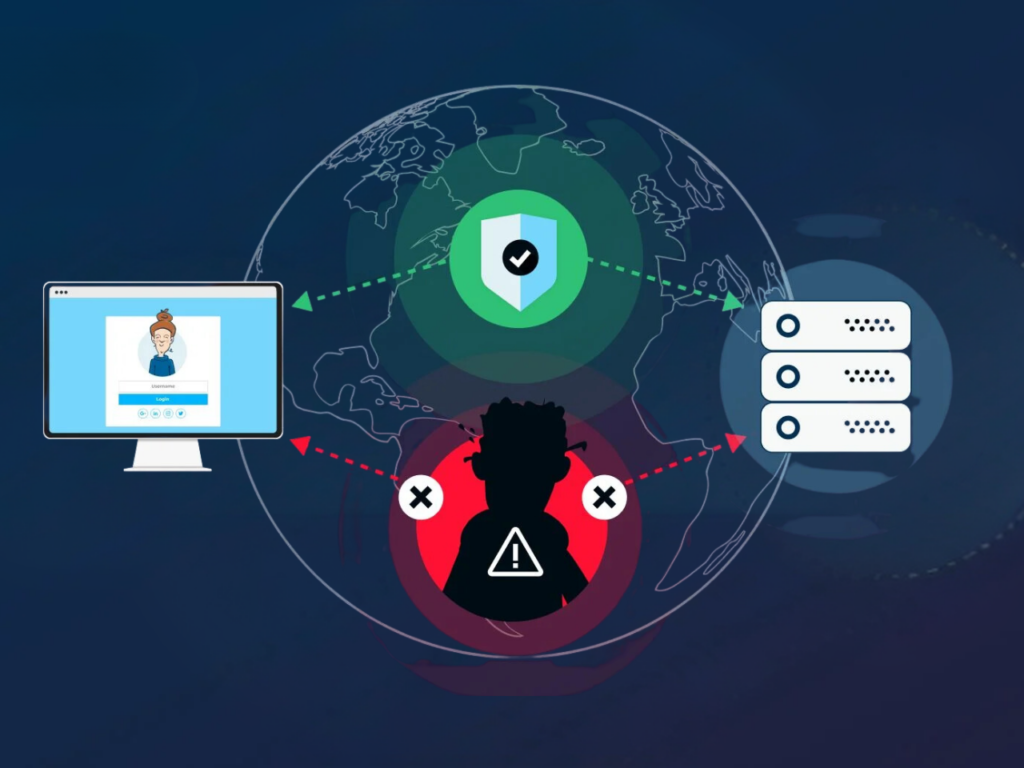Protecting Your Network: Understanding and Preventing Man-in-the-Middle (MITM) Attacks
Man-in-the-Middle (MITM) attacks are a prevalent threat to computer networks and users, characterized by an intruder inserting themselves as an intermediary in secret communications between two parties, disrupting the exchange. In this article, we delve into the details of MITM attacks, their types, and examples, and explore strategies to minimize the risks associated with these breaches.
What is a MITM attack?
As previously mentioned, a MITM attack disrupts communication and allows the attacker to install malware and carry out malicious activities. Additionally, it enables the interception and modification of data within the communication, making it a versatile threat with varying approaches.
MITM Attack Types and Examples
- IP Spoofing Attack:
- Communication in a computer network involves the exchange of data packets, each containing a Source IP Address (the sender’s IP).
- IP Spoofing manipulates the Source IP Header to obscure the sender’s identity or facilitate Reflective Distributed Denial of Service (DDoS) attacks.
- This manipulation is exploited in numerous DDoS tools.
- ARP Spoofing Attack:
- ARP Spoofing, or ARP Poisoning, is a MitM attack that targets network devices and necessitates network access within the same network.
- The attacker identifies at least two devices, such as a router and a computer, and utilizes tools like Arpspoof or Driftnet to send fake ARP responses.
- These responses trick the devices into communicating through the attacker’s machine instead of directly, allowing the attacker to manipulate the communication.
- DNS Spoofing Attack:
- DNS spoofing redirects victims to fake websites by supplying false information to the DNS server they connect to.
- This can lead to users unknowingly accessing malicious sites, enabling further exploitation, like browser exploits.
- Session Hijacking:
- In Session Hijacking, the attacker seizes an active session ID, allowing them to impersonate the victim without requiring login credentials.
- This can lead to unauthorized access to sensitive accounts, such as social media or online banking.
How to Prevent MITM Attacks?
While 100% prevention is challenging, you can significantly reduce the risk of MITM attacks through the following measures:
- Using End-to-End Encryption:
- Encrypt data from sender to receiver to make it difficult for attackers to intercept and read information during transmission.
- Utilizing a Virtual Private Network (VPN):
- VPNs establish encrypted tunnels for internet access, rendering communications indecipherable to potential attackers.
- Avoiding Public Wi-Fi:
- Minimize the use of public Wi-Fi networks, as many lack adequate security measures.
- If necessary, employ a VPN for added protection when accessing sensitive data on public networks.
- Keeping Software Updated:
- Regularly update software to patch vulnerabilities.
- While immediate updates are recommended, waiting a week or two after a release can allow for bug fixes to emerge and ensure smoother updates.
By understanding the mechanics of MITM attacks and implementing these protective strategies, you can fortify your network against this prevalent threat. If you require more in-depth information on specific attack techniques or preventative measures, please leave a comment, and we’ll consider it for future articles.
Image credits: strongdm

